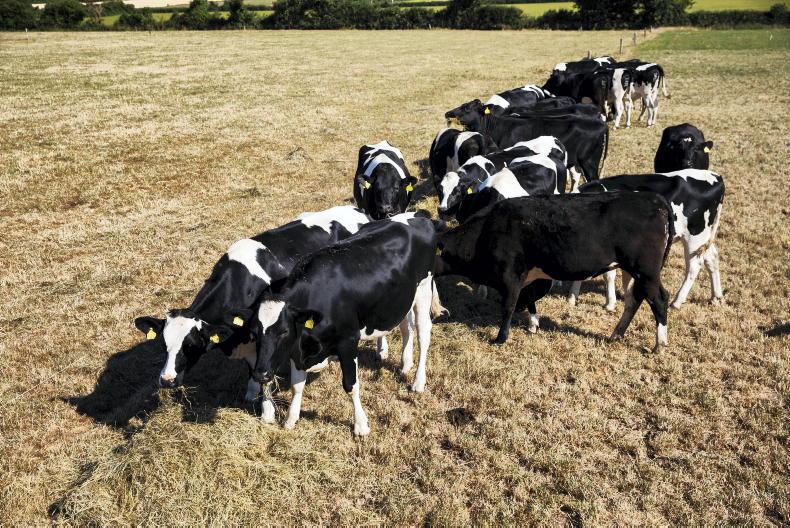Global temperatures are likely to surge to record levels over the next five years, fuelled by heat-trapping greenhouse gases and a naturally occurring El Niño event, according to the World Meteorological Organisation (WMO).
There is a 98% likelihood that at least one of the next five years - and the five-year period as a whole - will be the warmest on record, it says.
The WMO also forecasts a 66% likelihood that the annual average near-surface global temperature between 2023 and 2027 will be more than 1.5°C above pre-industrial levels for at least one year.
“This report does not mean that we will permanently exceed the 1.5°C level specified in the Paris Agreement, which refers to long-term warming over many years.
“However, WMO is sounding the alarm that we will breach the 1.5°C level on a temporary basis with increasing frequency,” said WMO secretary-general professor Petteri Taalas.
Rainfall
The warmer temperatures are to also lead to more rainfall, the WMO explained.
Compared to the 1991-2020 average, predicted precipitation patterns for the May to September period between the years 2023 and 2027 indicate there will be increased rainfall in northern Europe, Alaska and northern Siberia.
There will be reduced rainfall for this season over the Amazon and parts of Australia, WMO predicts.
The rise in rainfall over northern Europe is likely to impact Irish farmers.
‘Unchartered territory’
Prof Taalas warned that a warming El Niño is expected to develop in the coming months and that this will combine with human-induced climate change to push global temperatures into “uncharted territory”.
“This will have far-reaching repercussions for health, food security, water management and the environment. We need to be prepared,” he said.

Farmers will see temperatures rise over the coming years, says WMO. \ Donal O' Leary
Dr Leon Hermanson of the United Kingdom’s Met Office added that “global mean temperatures are predicted to continue increasing, moving us further and further away from the climate we are used to”.
Key points
The WMO raised a number of key points in its warning on rising temperatures. These include:
The average global temperature in 2022 was about 1.15°C above the 1850-1900 average. The cooling influence of La Niña conditions over much of the past three years temporarily reined in the longer-term warming trend. But La Niña ended in March 2023 and an El Niño is forecast to develop in the coming months. Typically, El Niño increases global temperatures in the year after it develops – in this case, this would be 2024.The annual mean global near-surface temperature for each year between 2023 and 2027 is predicted to be between 1.1°C and 1.8°C higher than the 1850-1900 average. This is used as a baseline because it was before the emission of greenhouse gases from human and industrial activities.There is a 98% chance of at least one in the next five years beating the temperature record set in 2016, when there was an exceptionally strong El Niño.Arctic warming is disproportionately high. Compared to the 1991-2020 average, the temperature anomaly is predicted to be more than three times as large as the global mean anomaly when averaged over the next five northern hemisphere extended winters. Read more
Southern Europe in drought as summer starts
Global temperatures are likely to surge to record levels over the next five years, fuelled by heat-trapping greenhouse gases and a naturally occurring El Niño event, according to the World Meteorological Organisation (WMO).
There is a 98% likelihood that at least one of the next five years - and the five-year period as a whole - will be the warmest on record, it says.
The WMO also forecasts a 66% likelihood that the annual average near-surface global temperature between 2023 and 2027 will be more than 1.5°C above pre-industrial levels for at least one year.
“This report does not mean that we will permanently exceed the 1.5°C level specified in the Paris Agreement, which refers to long-term warming over many years.
“However, WMO is sounding the alarm that we will breach the 1.5°C level on a temporary basis with increasing frequency,” said WMO secretary-general professor Petteri Taalas.
Rainfall
The warmer temperatures are to also lead to more rainfall, the WMO explained.
Compared to the 1991-2020 average, predicted precipitation patterns for the May to September period between the years 2023 and 2027 indicate there will be increased rainfall in northern Europe, Alaska and northern Siberia.
There will be reduced rainfall for this season over the Amazon and parts of Australia, WMO predicts.
The rise in rainfall over northern Europe is likely to impact Irish farmers.
‘Unchartered territory’
Prof Taalas warned that a warming El Niño is expected to develop in the coming months and that this will combine with human-induced climate change to push global temperatures into “uncharted territory”.
“This will have far-reaching repercussions for health, food security, water management and the environment. We need to be prepared,” he said.

Farmers will see temperatures rise over the coming years, says WMO. \ Donal O' Leary
Dr Leon Hermanson of the United Kingdom’s Met Office added that “global mean temperatures are predicted to continue increasing, moving us further and further away from the climate we are used to”.
Key points
The WMO raised a number of key points in its warning on rising temperatures. These include:
The average global temperature in 2022 was about 1.15°C above the 1850-1900 average. The cooling influence of La Niña conditions over much of the past three years temporarily reined in the longer-term warming trend. But La Niña ended in March 2023 and an El Niño is forecast to develop in the coming months. Typically, El Niño increases global temperatures in the year after it develops – in this case, this would be 2024.The annual mean global near-surface temperature for each year between 2023 and 2027 is predicted to be between 1.1°C and 1.8°C higher than the 1850-1900 average. This is used as a baseline because it was before the emission of greenhouse gases from human and industrial activities.There is a 98% chance of at least one in the next five years beating the temperature record set in 2016, when there was an exceptionally strong El Niño.Arctic warming is disproportionately high. Compared to the 1991-2020 average, the temperature anomaly is predicted to be more than three times as large as the global mean anomaly when averaged over the next five northern hemisphere extended winters. Read more
Southern Europe in drought as summer starts










SHARING OPTIONS